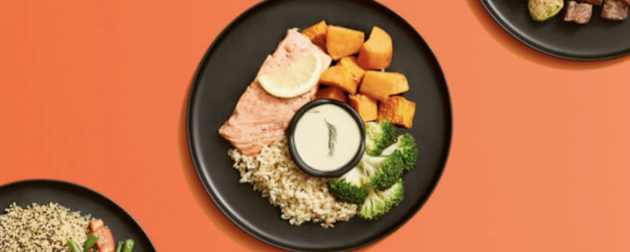Baby-led weaning bypasses introducing solids to babies by jumping straight to finger foods that a baby can self-feed in comparison to smooth, pureed foods that are usually fed from parent to baby. Baby-led weaning is said to build confidence in babies recognising their hunger and appetite levels when learning to feed themselves and possibly reducing fussiness around food choices. It is a messy practice, however, feeding babies, in general, comes with a little mess – it’s inevitable!
Spoon feeding on the other hand, as it sounds – is a baby being fed purees and smooth age-appropriate foods by spoon without the baby self-feeding. Spoon feeding doesn’t allow babies to learn to self-regulate food intake, they are more likely to eat more when being spoon-fed as the decision or recognition is involuntary. There are fewer safety concerns around potential choking as the parent is in control of the feeding process and often is closely monitoring their baby eating throughout the meal process.
Whichever choice parents choose to practice there are advantages to both, and they don’t need to be exclusively practised. You can introduce finger foods while still spoon-feeding, this offers the baby a baby-led weaning approach during the comfort of spoon-feeding. It is entirely up to parents which is more comfortable for all involved.
Generally nutrient profiles in formulas and breast milk meet nutritional needs a growing baby requires to develop into a healthy full-term infant such as carbohydrates, protein, fat, vitamins and minerals.
Focusing on iron-rich foods are important for a baby’s growth and development. This can be achieved by introducing foods such as meat, fish, chicken, iron-fortified cereals, legumes, tofu, dark green vegetables etc.
Chicken, eggs, peanuts, tree nuts, sesame, fish, shellfish, soy, cows milk and wheat.
The current allergy guidelines suggest allergy foods to be introduced between 6 and 12 months. Ideally babies should be introduced to allergy foods before 12 months as leaving it too late can increase the risk in developing a food allergy. Repeat exposure is the key as your baby may not react to the allergen food from the first exposure. Introduce allergenic foods one and a time, offer every 3-4 days for 3-4 exposures before introducing additional allergens.
NOTE: If you think your baby has an allergic reaction ensure you stop giving that food and seek expert advice.
Continue breastfeeding or using infant formulas whilst introducing foods. There are many nutritional considerations when babies hit the 6-month milestone. Start with toddler-friendly iron-fortified cereals softened in breast milk or formula, vegetables, fruit, meats, fish, cooked tofu etc. Start with 1-2 different foods initially so your baby can explore the tastes and textures.
When introducing solids to your baby you can start with as little as 1-2 teaspoons of soft pureed foods and increase gradually to 1-2 tablespoons. As your baby gets used and more accustomed to a type of food add a different food offering a variety of foods and flavours. Around the 8 months mark, it’s common for your baby to be eating 1-2 meals per day. Always consult with a trusted health professional before making changes to your baby’s diet.
My Baby Organics offers a range of 100% organic, plant-based baby food options that are frozen and ready-to-eat. Le Puree is also organic, providing allergen-free, dairy-free, non-GMO meals for babies and toddlers.
Most baby food delivery services do not have the option to customise your order to certain allergies or dietary restrictions. Be sure to check the labels to identify meals with potential allergens such as soy or nuts.
Whilst providers may not cater to allergen restrictions, many providers offer allergen introduction packs which are a guided approach to introducing the main allergens (nuts, eggs etc).
Every provider and every customer’s interpretation of ‘healthy’ differs from person to person. It’s important to know as a consumer what you want from a meal delivery service. The healthiness of baby food delivery services varies, and it depends on factors such as ingredient quality, nutritional balance, age appropriateness, allergen information, processing methods, packaging, and customisation options. When considering whether a baby food service is right for your infant, consider the following; do they use quality, natural ingredients? Do they use additives and preservatives? Does the provider use Dietician’s and Nutritionists to design the meals? Always consult with your healthcare practitioner or paediatrician before deciding whether a service is right for you.
Introducing a single food that is mashed or smooth is a great starting point. A single food is important instead of a mixture of flavours as the baby can learn to recognise different flavours and preferences. You can prepare your baby’s first foods from home focusing on iron-rich foods that can be prepared to be pureed or smooth i.e. cooked vegetables, avocados, fruits, blended meats etc. You can introduce iron-fortified cereal blended to a smooth texture within a formula or expressed baby milk to a smooth puree texture, as well as other iron-rich foods that need pureeing i.e. meats, egg, fish, chicken. As your baby grows the texture can lessen moving from puree to mashed, to soft finger-friendly foods.
